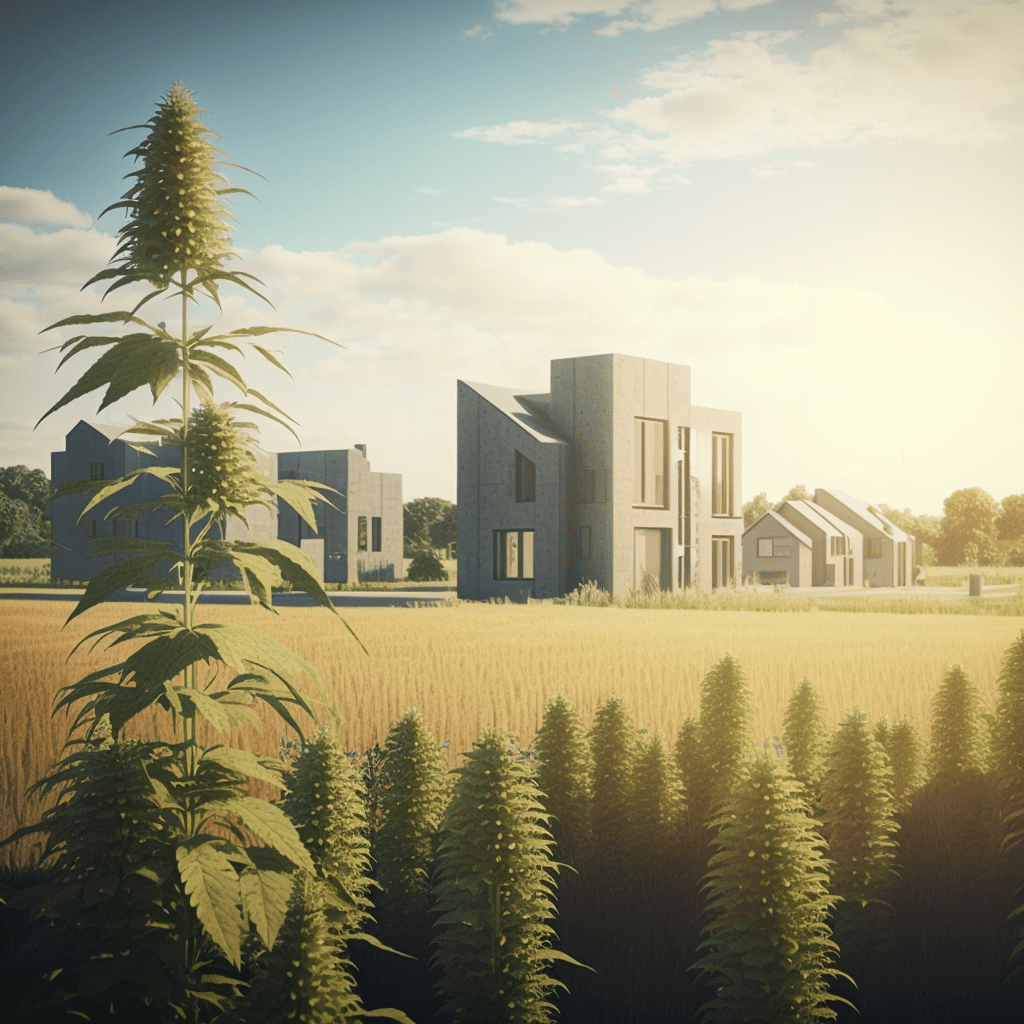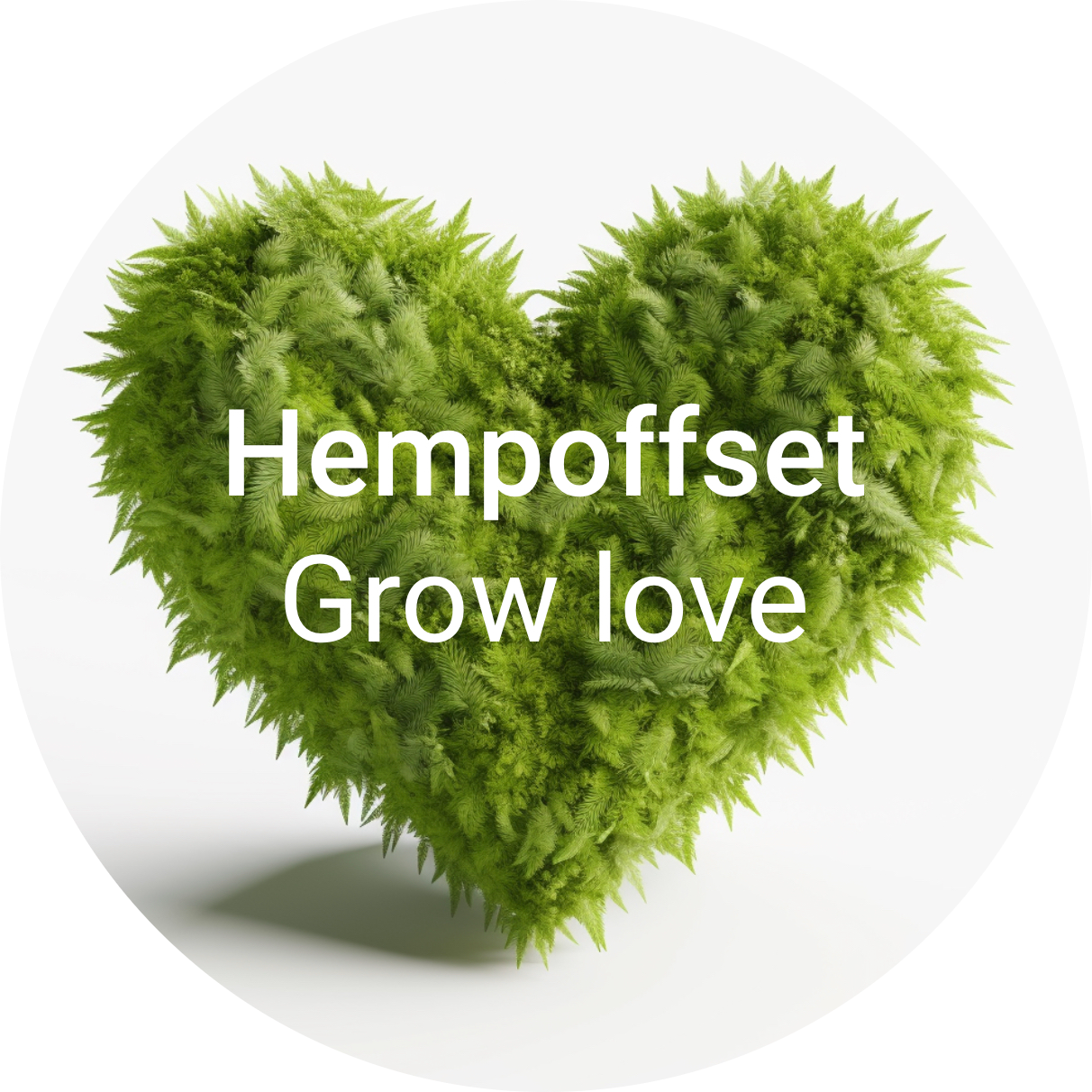Hemp is the end-to-end solution
Hemp is a versatile and sustainable crop that can play an important role in mitigating climate change by capturing and storing carbon dioxide (CO2) through the process of photosynthesis. The carbon journey across the hemp lifecycle starts with the growth of the hemp plant and continues through the use of hemp-derived materials in construction and infrastructure.
During photosynthesis, hemp plants absorb CO2 from the atmosphere and convert it into biomass, which is stored in the plant’s leaves, stems, and roots. This process helps to reduce the amount of CO2 in the atmosphere, which is one of the main contributors to climate change. In fact, hemp plants are known to be very efficient at capturing CO2, with some estimates suggesting that they can absorb up to four times as much CO2 as trees.
Photosynthesis is the biotech we need
Photosynthesis is the most effective way to capture atmospheric carbon dioxide (CO2). It is a natural process by which plants, algae, and some bacteria convert light energy from the sun into chemical energy in the form of organic compounds. During photosynthesis, these organisms absorb CO2 from the atmosphere and use it, along with water and sunlight, to produce carbohydrates and oxygen.
Photosynthesis is the most effective way to capture atmospheric CO2 because it is a natural, continuous process that occurs on a massive scale. The amount of carbon dioxide that can be captured through photosynthesis is enormous, with estimates suggesting that plants and algae absorb up to 130 billion metric tons of CO2 each year.
In addition to capturing atmospheric CO2, photosynthesis also plays a crucial role in regulating the Earth’s climate. The oxygen produced during photosynthesis is released back into the atmosphere, creating a balance between oxygen and carbon dioxide levels. This balance is critical for maintaining the Earth’s temperature and supporting life as we know it.
While photosynthesis is the most effective way to capture atmospheric CO2, it is not a perfect solution to the problem of climate change. Human activities, such as burning fossil fuels and deforestation, have resulted in a significant increase in atmospheric CO2 levels, which has led to global warming and other climate-related problems. However, increasing the amount of vegetation on the planet through reforestation, afforestation, and other land-use practices can help to reduce atmospheric CO2 levels and mitigate the effects of climate change.
Carbon sequestration
Once the hemp plant has been harvested, the carbon stored in the biomass can be used to create a wide range of products, including hempcrete. Hempcrete is a sustainable building material made from a mixture of hemp hurds (the fibrous core of the hemp plant), lime, and water. When hempcrete is used in construction, it has the potential to lock away carbon for the long term, as the lime in the mixture reacts with carbon dioxide in the atmosphere and hardens over time.
In addition to hempcrete, hemp can also be used to create a range of other sustainable building materials, such as insulation, roofing, and flooring. These materials not only have the potential to lock away carbon, but they also have a lower carbon footprint than many traditional building materials, such as concrete and steel.

Hemp construction materials
Industrial hemp is a versatile plant that can be used to create a wide range of sustainable construction materials. Here are some examples:
- Hempcrete: Hempcrete is a bio-composite material made from the woody core of the hemp plant (known as hurds), mixed with a lime-based binder and water. Hempcrete has excellent insulation properties and is also fire-resistant and breathable, making it a popular choice for sustainable construction.
- Hemp insulation: Hemp can also be used to create thermal insulation for buildings. Hemp insulation is made from the long fibres of the hemp plant, which are processed into a soft, fluffy material. Hemp thermal insulation has a lower carbon footprint than traditional insulation materials, such as fibreglass, and is also more resistant to mould and pests.
- Hemp fibreboard: Hemp fibreboard is a composite material made from hemp fibres and a binding agent. Hemp fiberboard can be used as a substitute for traditional particleboard or medium-density fibreboard (MDF) in furniture and construction. It is a durable and sustainable material that can be used for a range of applications.
- Hemp plastic: Hemp can also be used to create biodegradable plastics. These plastics are made from hemp fibres and a biopolymer, which can break down naturally over time. Hemp plastics can be used for a range of applications, including packaging and construction materials.
- Hemp roofing: Hemp can be used to create roofing tiles and shingles. These tiles are made from a mixture of hemp fibres and a binder, such as clay or concrete. Hemp roofing is a durable and sustainable alternative to traditional roofing materials, and can also help to insulate buildings.
- Hemp flooring: Hemp can be used to create durable and sustainable flooring options. Hemp flooring can be made from the fibres or hurds of the hemp plant, which are processed into a range of materials, including carpet, tiles, and hardwood.
Industrial hemp offers a range of sustainable construction materials that can help to reduce the carbon footprint of buildings and infrastructure. As more countries legalize and support the cultivation of hemp, we can expect to see an increase in the use of hemp-based construction materials in the future.
Overall, the carbon journey across the hemp lifecycle highlights the potential of this versatile crop to help mitigate climate change by capturing and storing carbon dioxide. From the growth of the plant to the use of hemp-derived materials in construction and infrastructure, hemp has the potential to play an important role in building a more sustainable future.
Let’s get building a better world!

Learn more
Latest posts
- Invest in Hemp’s Future: Tao Climate’s AI Space MRV
- 2025 is the Year of Hemp
- Hemp and the City: Our Big Hemp Pitch at the San Francisco XPRIZE Carbon Removal Capital Summit
- Hempoffset / Tao Climate Expands into USA, Joins Hemp Incubator Company Technology Accelerator
- We’re in the XPRIZE Top 100 in the World
Founder and CEO at Hempoffset.com and TaoClimate.com.
Hempoffset works with hemp growers and makers worldwide, to capture and sequester CO2 at scale, while building a sustainable world.
Tao Climate works with companies and individuals that want to measure, minimise and manage their carbon footprints. Tao Climate is the way to carbon neutral.
We are proud members of the Google Startups for Sustainable Development program.

